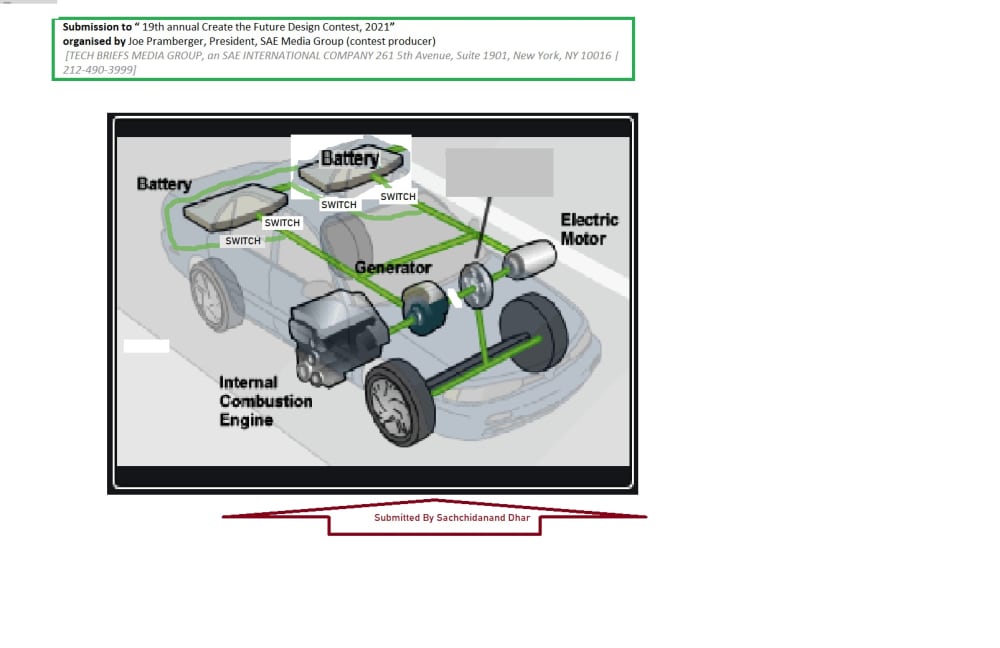TOPIC: ELECTRIC CARS THAT COULD OPERATE FOR A LONGER TIME AWAY FROM CIVILIZATION AND ELECTRIC SUPPLY
=========
EXTRACT: Electric vehicles have lesser travel range than fossil fuel vehicles. This limits electric vehicles to the vicinity of electric charging facilities. It also limits their viability, and sales, in such countries which do not have an extensive electric supply network. This disadvantage can be overcome by making self-charging vehicles.
=========
INTRODUCTION: Electric motor driven vehicles have gained acceptance, and seem to be the better choice in the future because of environment friendly advantage.
Yet sales of such vehicles does not seem to be picking up, because, when the battery runs out, recharging the battery could take a few hours, which is not as convenient as filling gas at a gas station or filling petrol at a petrol pump.
Most countries, irrespective of their developmental status, do not have an extensive network of battery charging stations.
Besides, the vehicle cannot go far, or away for long duration, from charging networks. That means, Electric Vehicle is not well suited for Forest or Desert trips.
It also may not be possible to keep the vehicle stopped for many days, for fear of battery charge reducing during stopped condition.
=========
SUGGESTION: It is suggested that the battery be divided in 2 halves of equal capacity. One half to be in use at any time, for driving the vehicle. Other half should be kept in charging mode, while the vehicle is running on one battery. For charging the other battery, there should be a small Engine Driven Generator on board. This engine could be either Petrol/ Gas or diesel driven. Sufficient fuel to be stored on board the vehicle.
=========
PERCEIVED ADVANTAGES:
- Car can run continuously at normal speed, using one set of batteries at any given time, while the other set of batteries is being charged.
- Engine need not be very powerful, because it will not be used to pull the car. It should only be large enough to be able to charge one of the batteries in a few hours, during normal travel of the car.
- When within close range of a Battery Charging station, on board engine can be stopped. Batteries can be charged at charging station, which would hopefully be supplying electricity from a non-polluting source (e.g. Hydro, Wind, Wave or Nuclear)
- Engine can be air cooled, making it possible to do away with extensive cooling equipment associated with water cooled engines.
- This system is not the same as that of a Hybrid Car, where engine needs to be powerful enough to pull the car.
- As the Charging Network gets better developed and expanded, use of On Board Charging Electric Generator will reduce automatically.
Like this entry?
-
About the Entrant
- Name:Sachchidanand Dhar
- Type of entry:individual
- Patent status:none

